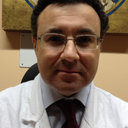Structured exercise training programme versus hypocaloric hyperproteic diet in obese polycystic ovary syndrome patients with anovulatory infertility: a 24-week pilot study.
Nyckelord
Abstrakt
BACKGROUND
Lifestyle modifications are successfully employed to treat obese and overweight women with polycystic ovary syndrome (PCOS). The aims of the current pilot study were (i) to compare the efficacy on reproductive functions of a structured exercise training (SET) programme with a diet programme in obese PCOS patients and (ii) to study their clinical, hormonal and metabolic effects to elucidate potentially different mechanisms of action.
METHODS
Forty obese PCOS patients with anovulatory infertility underwent a SET programme (SET group, n = 20) and a hypocaloric hyperproteic diet (diet group, n = 20). Clinical, hormonal and metabolic data were assessed at baseline, and at 12- and 24-week follow-ups. Primary endpoint was cumulative pregnancy rate.
RESULTS
The two groups had similar demographic, anthropometric and biochemical parameters. After intervention, a significant improvement in menstrual cycles and fertility was noted in both groups, with no differences between groups. The frequency of menses and the ovulation rate were significantly (P < 0.05) higher in the SET group than in diet group but the increased cumulative pregnancy rate was not significant. Body weight, body mass index, waist circumference, insulin resistance indexes and serum levels of sex hormone-binding globulin, androstenedione and dehydroepiandrosterone sulphate changed significantly (P < 0.05) from baseline and were significantly different (P < 0.05) between the two groups.
CONCLUSIONS
Both SET and diet interventions improve fertility in obese PCOS patients with anovulatory infertility. We hypothesize that in both interventions an improvement in insulin sensitivity is the pivotal factor involved in the restoration of ovarian function but potentially acting through different mechanisms.



